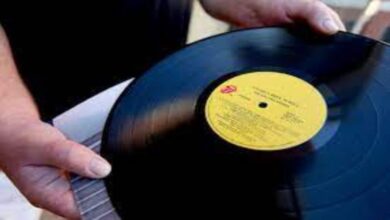The Basics of Playing the Guitar

A guitar has several parts, which are crucial for playing the instrument. The fingerboard has frets, which are metal pieces that change in length and tone when pressed against them. The guitar has two other parts: the nut and the saddle, which are grooving into the instrument to accept the strings. The distance between these two is called the guitar’s scale length. Once you know which part of the guitar is crucial for playing, you can proceed to choose its string and frets.
Strings
A guitar is a fretted musical instrument with six strings, usually held flat against the player’s body. It is played by strumming or plucking selected strings with the dominant hand, and pressing the strings against the frets with the opposite hand. The guitar is an important tool in music, and many musicians play it as a hobby. To learn how to play the guitar, watch this video. It will teach you the fundamentals.
Read More: Best Undereye Concealer For Dark Circles
Frets
The relationship between frets and notes to determine a scale’s structure and name. Guitar scales are all types of scales, and each one has its own unique combination of distances between frets and notes in an octave. The distance between each fret and the root note is called the fretboard’s width. Frets vary in width from ultra-narrow (.053″) to super jumbo (.118″).
Inlays
Inlays on a guitar are decorative features added by a luthier. They are hand-cut and custom-designed to fit the guitar’s neck. In addition to being a decorative element, they represent an act of patience and love. Some inlays are made of mother of pearl, while others are made of celluloid plastic. Inlays are not required by law, but they are generally more expensive. There are many types of inlays, so it’s important to understand which ones fit best with your style and budget.
Know trending news from Basic White Gi So Special
Bracing
Guitar bracing is a system of wooden struts which reinforces and supports the back and soundboard of a guitar. When done properly, it will ensure that the guitar will perform at its best and last for a long time. Here are some benefits of guitar bracing. They will help you choose the right guitar for your needs. Here are some of the most common types of bracing:
Pick guard
A guitar pickguard is a great way to protect the top and finish of a guitar. Even classical guitars are made to be finger-picked, but a pick guard protects the tap from damage. Just look at Willie Nelson’s guitar, which has been damaged by the picks of a rock star. You’ll never be able to play as well as him with a pickguard on your guitar.
Please visit for more information: Publix Passport
Tuning
There are two methods for tuning a guitar. One way is to tune the fifth string to the fifth fret of the third string. The other method is to tune the open fourth string to the fifth fret of the E string. This method will work the same for the B string. You should also try to tune the first string to the fifth fret of the B string and the second string to the fifth fret of the string. Here is a breakdown of how to tune a guitar.
Woods
There are many different types of wood used for guitars, and each one is unique in terms of sound, appearance, and weight. While guitars are often made of a single wood, the neck, bridge, and other parts are typically composed of several. Because guitar woods come from different places and trees, they will also produce different tones. The weight and density of the wood will also vary, making it crucial to select the right one for your instrument.
Fret board
If you want to play the guitar, you must know about the fretboard. You need to know the notes of each string and where they are located on the fretboard. Learning how to read a fretboard is crucial to a successful guitar-playing career. Listed below are some of the most helpful guitar learning resources. Read on to learn more. We’ll also discuss the importance of fretboards for different scales, chords, and styles of music



